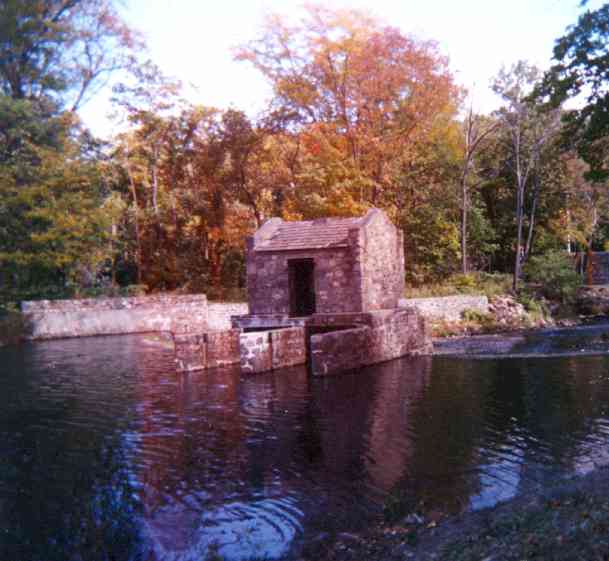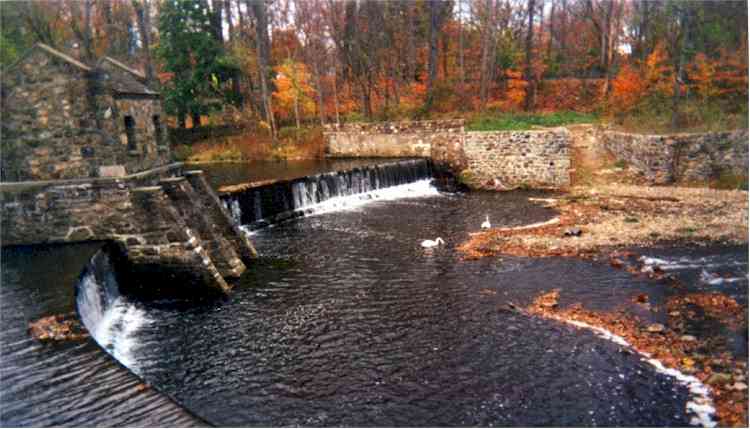Time Ruins Everything
The MillNo stream rises higher than its source. - Frank Lloyd Wright
The Speedwell Iron Works located on the Whippany River in Speedwell Lake Park Historic Speedwell preserves the Morristown estate of Stephen Vail, owner of the Speedwell Ironworks. During the 19th century, the Speedwell Ironworks became a major industrial center in northern New Jersey due to the hard work and foresight of Stephen Vail, who began his career as a blacksmith and became a prosperous ironmaster. Today the millrace is gone, the buildings are leveled, and little remains of the Speedwell Iron Works. But Stephen Vail's diaries, letters, and business papers, as well as maps, sketches, and photos illustrate its development from a small nail-producing mill to a dynamic industrial complex. The objects cast at the Speedwell Iron Works ranged in size from 8 inches to 8 feet in diameter. The 1853 waterwheel, found in the wheelhouse at Speedwell, is an example of the cast iron products made by the Vail family. In 1853, at the height of the most prosperous period at Speedwell, the New York Daily Tribune noted that the Iron Works employed 45 men, including moulders, blacksmiths, machinists, and common labourers. The works also employed carpenters, millworkers, clerks and apprentices. The Period of DeclineIn the 1850's, the Speedwell Iron Works was riding the crest of success as a manufacturing enterprise. The firm was known as G Vail & Company after 1844; however, George Vail became increasingly involved in political activities, and probably left the day-to-day management of the firm to his nephew and his stepbrother. By the 1870s, the New Jersey iron industry began to decline. The centre of the industry shifted westward closer to the sources of fuel and raw materials. The water level of the Whippany River declined in the late 19th century, decreasing the waterpower available to the Iron Works and leading to its 1873 closure. In 1876 the equipment was sold and shipped to ironworks in Coatbridge, Scotland and in Brooklyn, New York. After 1876, the buildings of the Speedwell Iron Works decayed slowly, until a 1908 fire destroyed all but two portions of the Iron Works' walls. These remains can be seen at the foot of the falls of Speedwell Lake (across Route 202 from Historic Speedwell). This area is now maintained as a public park by the Town of Morristown. Source: speedwell.org/iron/ironworks.html photo from personal files
Speedwell Iron Works - A Different View
I hired the swans to pose for this picture. (What? You don't believe me?) Source: personal files
For photos of the earth and moon, stained glass, sunsets on Wellington Harbour, Lady Fair, Civic Square, the old mill, the Whippany River, historical houses, Lake Parsippany and more clicking
the "Up" button below takes you to the Index page for this Photographs section. |
 Animals
Animals Animation
Animation Art of Playing Cards
Art of Playing Cards Drugs
Drugs Education
Education Environment
Environment Flying
Flying History
History Humour
Humour Immigration
Immigration Info/Tech
Info/Tech Intellectual/Entertaining
Intellectual/Entertaining Lifestyles
Lifestyles Men
Men Money/Politics/Law
Money/Politics/Law New Jersey
New Jersey Odds and Oddities
Odds and Oddities Older & Under
Older & Under Photography
Photography Prisons
Prisons Relationships
Relationships Science
Science Social/Cultural
Social/Cultural Terrorism
Terrorism Wellington
Wellington Working
Working Zero Return Investment
Zero Return Investment
